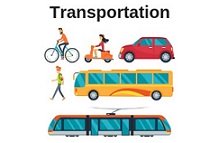IELTS Speaking Part 2
IELTS Speaking Part 2 has a very different format to Parts 1 and 3. Understanding it is crucial to success, and having the right strategy to tackle it, vital.
On this page we will:
- Learn the format of IELTS Speaking Part 2.
- Become familiar with the cue card.
- Discover 5 common reasons why
people don’t do well in Part 2.
- Understand how to avoid these mistakes.
- Learn the #1 way to ensure success.
The Format
Total time: 3-4 minutes
- The examiner will give you a cue card with a topic written on it.
- It will also have 3-5 bullet points telling you what to include in your talk.
- You will be given 1 minute for preparation during which you are allowed to make notes.
- You will be asked to speak on this topic for up to 2 minutes.
- The examiner will probably ask you one or two questions about your topic.
Want to watch & listen to this section?
Click on this video.
It’s impossible to predict the subject you’ll be asked about. The range of potential topics is vast.
Don’t waste your energy stressing about this; worrying that it will be a subject you know nothing about. It will be what it will be, but you can be sure that it will be related to you in some way, for example:
- something about you
- something that has happened to you
- something you have experienced
With the strategies and
techniques I’m going to give you in the Speaking section of the website, you’ll be able to speak for 2 minutes on any
subject you’re given.
Here’s an example of an IELTS Speaking Part 2 cue card.
Describe a place you like near water.
You should say:
- where this place is
- what you did at this place
- who you went there with
and explain why you liked this place.
The topic is stated in the first sentence. In this case, it’s ‘a
place near water’.
The 3 bullet points and final clause are a guide as to what you should talk about but you don’t have to stick rigidly to them.
Before we discuss the cue card in detail, I want to quickly address the key reasons for people not doing well in Part 2 so that you can avoid making the same errors.
5 Reasons People Don’t
Do Well In
IELTS Speaking Part 2
Obviously, you need to be able to use the English language effectively and competently and to show skill in the four key skills on which you’ll be assessed:
- Fluency and Coherence
- Vocabulary
- Grammar
- Pronunciation
Each of these holds 25% of the marks.
Want to watch & listen to this section? Click on this video.
However, there are 5 things that frequently result in candidates getting a far lower score that they're capable of and they have little to do with their language ability.
The problems are that they:
1) Don’t speak for the full 2 minutes.
2) Run out of things to say.
3) Have an unstructured talk.
4) Read their notes rather than speak naturally.
5) Panic because they think they know nothing about the topic.
How long to speak for
A common question from students is, “Do I have to talk for exactly 2 minutes?” The simple answer is “No”. Keep talking until the examiner stops you, which will be at around 2 minutes. If you stop before 1 minute 40 or 1 minute 50, this will probably affect your score as you may lose marks for fluency & coherence.
Why people finish early
It’s because they’ve run out of things to say. The reason they don’t know what else to say is generally that they haven’t used their 1 minute planning time wisely. This is most likely because they don’t have a good planning strategy.
Poor planning leads to an unstructured answer with ideas popping up all over the place and not really tying together. You'll find 3 strategies for your IELTS Speaking Part 2 talk on these pages:
Part 2 Planning Strategy - Method 1: ‘question
prompt’ + planning notes & sample answers.
Part 2 Planning Strategy - Method 2: ‘brainstorming’ + planning notes & sample answers.
Part 2 Planning Strategy - Method 3: ‘the 5 senses’ planning notes & sample answers.
Reading out notes
Another classic mistake candidates make is to read out their notes rather than talking naturally. This has several consequences.
If you read your notes, your speech will sound like ‘reading’ not ‘speaking’. It will have unnatural fluency, sentence stress and pronunciation. This will not please the examiner. They’re there to test your speaking skills, not your reading ability.
Focussing too closely on your notes while speaking may also cause you to move quickly from one bullet point to the next without developing your ideas. You're likely to reach the end with lots of time still to go and nothing more to say.
Use your notes as a guide only.
Don’t panic
Don’t be that candidate who completely wastes their planning time because they’re convinced they don’t know anything about the subject they’ve been asked to talk about and go into brain meltdown.
Most topics are related to everyday life and common experiences. I guarantee that I could ask you about any subject in these categories and you could tell me at least three or four things you know about it, even if the topic was something you believed you knew nothing about. Three or four things are enough to create an answer.
Then you just need a few strategies for developing your talk around them. (Scroll up to see the links to 3 planning methods and Part 2 Speaking sample or find them at the bottom of the page.)
The examiner will not be expecting a degree level answer. They just want to know what you know about the topic – a few facts and your own thoughts, opinion and feelings.
The content of your talk is not nearly as important as how you say it, that is, your fluency, grammar, pronunciation and vocabulary.
Be confident that you can deal with any topic because you can.
The Cue Card
Now let’s examine the cue card.
In the introduction to IELTS Speaking Part 2, the examiner will give you a cue card. Here's another example.
Describe something healthy you enjoy doing.
You should say:
and explain why you think doing this is healthy.
The most important words on the cue card are the first sentence. This is your topic. This is what you must talk about for your 2 minutes. The bullet points are there as a guide as to what you could include in your talk.
The next piece of information I’m going to give you is very important and something many people don’t know, so please pay close attention to it.
There are many other things you could talk about as well. You don’t have to stick to the suggestions in the bullet points.
Most people only talk about the bullet points and they work through them one by one in the order they’re written. It’s not a problem if you want to do this but if it’s the only strategy you have, you’re very likely to run out of things to say before the 2 minutes is up.
You may find that the suggestions in the bullet points don’t totally relate to your experience of the topic or they aren’t really what you want to say about it. This is another good reason to have other options for developing your talk.
The key is to stay focussed on the topic. Use the bullet points as a guide but don’t limit yourself to them. You certainly don’t have to use all of them and you won’t lose marks if you miss some of them out.
Knowing this will put you ahead of most students because the majority don’t know it.
So to summarise:
- The bullet points are there as a guide.
- You don’t have to use them all.
- You can talk about other things as well.
- The key is to stay focussed on the topic.
What else can you talk about?
What else you talk about will depend on the topic but here are some ideas.
- Your thoughts
- Your opinion
- Your feelings
- Background
- Descriptions
- Examples
- Present situation
- Future situation
- Anything else relevant…
Having a good selection of additional ideas to potentially talk about will give you the tools to tackle any topic that comes along.
If you’re lucky, you’ll get a topic you’re enthusiastic or passionate about, something quite personal to you such as,
- Describe a favourite photograph.
A topic can
be quite specific or a much wider, general subject such as,
- Describe a city you have visited.
Like this page?
Learn the Best Planning Strategies
For IELTS Speaking Part 2
Now that you have a good understanding of how to approach IELTS Speaking Part 2 and the main mistakes to avoid, it’s time to look at some specific planning strategies and sample answers. Here are the links again plus a page of ideas for how to start your talk.
Part 2 Planning Strategy - Method 1: ‘question
prompt’ + planning notes & sample answers.
Part 2 Planning Strategy - Method 2: ‘brainstorming’ + planning notes & sample answers.
Part 2 Planning Strategy - Method 3: ‘the 5 senses’ planning notes & sample answers.
Part 2 Introduction: How to begin your IELTS Speaking Part 2 talk & top tips for gaining extra marks.
Other Related Pages
IELTS Speaking Test: Know the format & understand what you’ll be assessed on. Discover the main reason for low scores & how to avoid this big mistake.
IELTS Speaking Tips: 9 top tips to increase your chances of getting a high score
IELTS Speaking Topics: Discover 40+ common subject areas for the IELTS Speaking Test.
IELTS Speaking Practise Questions – Download 30 full mock tests (30 practise cards on 30 topics – 330 questions altogether).
IELTS Speaking Part 1 – 7 simple methods for developing your answers, with examples.
IELTS Speaking Part 3 – 6 common types of questions & how to answer them.
IELTS Speaking
Practice: Massively improve your speaking skills by learning how to think in
English.





















